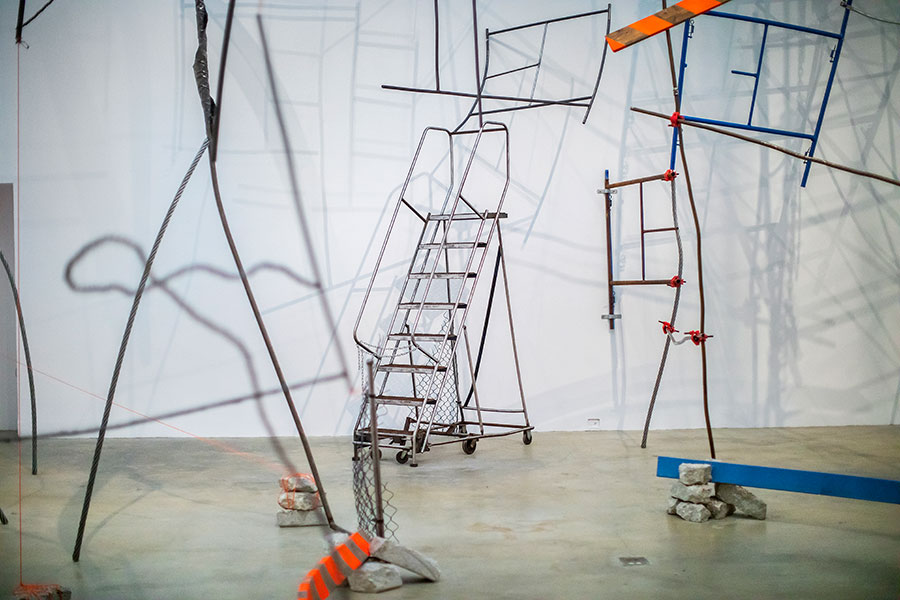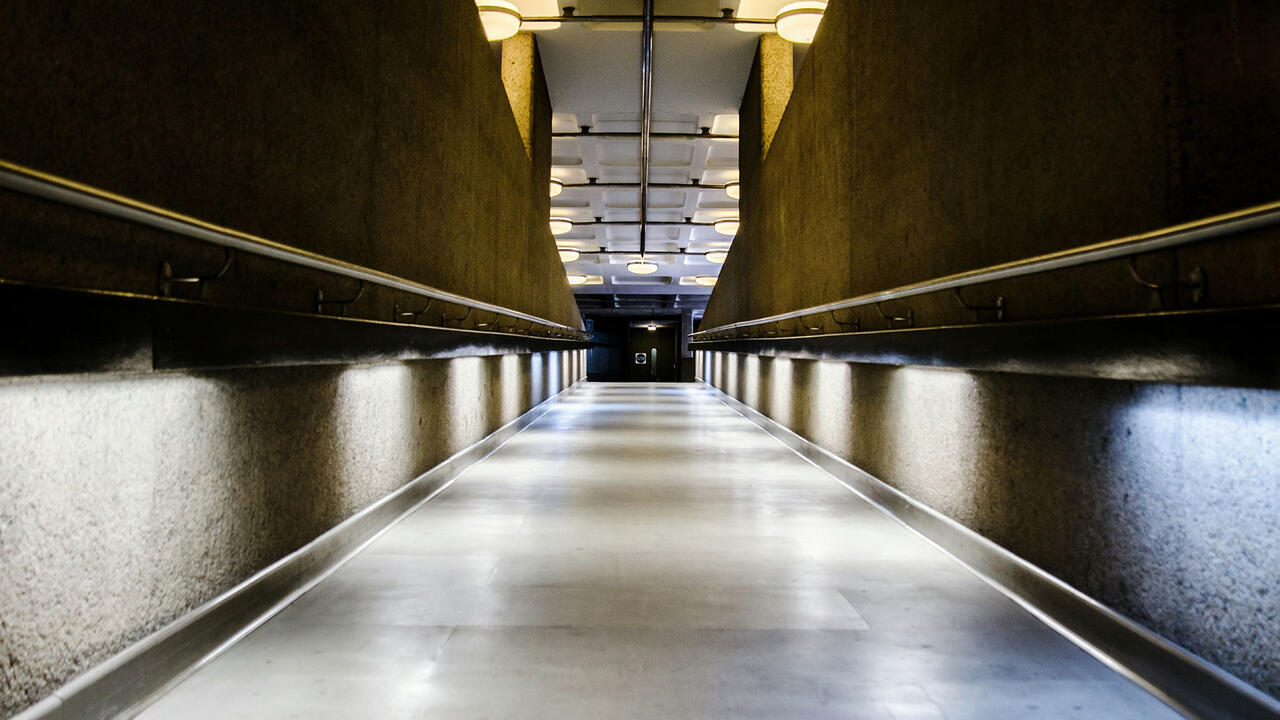Michelle Lopez’s Sculptures Exude Strength Amidst Impending Collapse
In the artist’s solo show at ICA Philadelphia, industrial materials convey a sense of quiet discontent
In the artist’s solo show at ICA Philadelphia, industrial materials convey a sense of quiet discontent

If postminimalism underscored the fallibility of industrial materials – by boldly demonstrating the effects of corrosion, the limits of ductility, the toxic by-products of the manufacturing process and so on – then one challenge for contemporary sculptors is to prove the ways in which unheroic material qualities determine today’s built environment. The physical and cultural elements structuring society are also tenuous, susceptible to decay, and poorly reinforced by symbolism and rhetoric.
The sculpture of Michelle Lopez has been linked to postminimalism due to its particularly delicate registration of the human form. Such is the case with Blue Angels (Paper Series) (2011) – standing, folded-aluminium sentinels wrinkled under the force of the artist’s weight – which are on view in ‘Ballast & Barricade’, her solo exhibition at ICA Philadelphia. By challenging the mineral, structural and semiotic properties of her materials, Lopez extrudes from them a sense of quiet discontent.

Consider Flag (2014) and how its leaden standard weighs heavily on an exceedingly narrow steel post, visibly marking a precise position even as its left edge appears to crumple gently against a nonexistent breeze. Manifesting the operation of a false flag, the sculpture is a symbolic deflection. The prominent base of Halyard (2014) interrupts the free plan of the gallery with a single architectural column of brushed aluminium and accommodates a length of rope wound loosely around a steel cleat, implying the presence of a considerable banner whipping out of view, overhead. (This perception is enhanced by the rhythmic crescendo of an accompanying six-channel audio recording.) Rather than parse any vexillological icon under which the work, its audience or, indeed, art may be sequestered here, Lopez draws a complete blank – divorcing the emblem of the flag from its stake altogether. Yet, the suggestion of a standard still exposes the cultural position of sculpture as somehow always indicative; whether abstract or figurative, its structure, scale and materiality inevitably realize the referential values – freedom, free expression, free market – of its ground.

The eponymous installation newly commissioned for ‘Ballast & Barricade’ fills the double-height space on the ICA’s second floor, riffing on more recent investigations into the physically precarious limits of support structures (as evident in Barricade, 2018, and Rope’s End IV, 2017). Handmade, hand-moulded or hand-blasted materials either simulate or distort readymade industrial products and rough-hewn objects common to the 21st-century urban environment, including twisted chain-link fencing, prefabricated rolling staircases, bent scaffolding panels and water-softened planks coated blue or orange to recall police and construction barriers. All of these cumbersome, rusticated elements are perilously suspended – via aircraft cable, paracord, chain, steel bolts and clamps – in an interconnected system as elegant as it is devastatingly ephemeral. Piles of concrete and natural rock recovered from excavation sites throughout the city are stacked on the floor to maintain tension throughout the composition, which is entirely counterbalanced by the intact corner of a demolished terraced house, complete with drain pipe, brick masonry, projected pink-stucco column and roof shingles. The extant electrical wiring in this peculiar kitsch fragment – reminiscent of Gordon Matta-Clark’s pre-demolition building cuts but excised of any nostalgia – powers a lamp still swinging from its portico, which emits a circle of light low to the ground. As the sprawling sculpture and its dangling armature trouble the viewer’s perspective, casting depth-defying shadow, its energy is indirectly consolidated into a small lantern. The focus of this beam onto the smooth concrete floor below outlines the sly possibility for stability – or solidity – in the midst of impending collapse.
Main image: Michelle Lopez, 'Ballast & Barricades', 2020, installation view. Courtesy: the artist and Institute of Contemporary Art, University of Pennsylvania; photograph: Constance Mensh





















